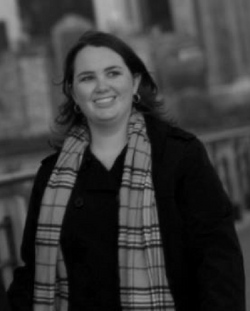No Bones About It
Rice University redesigns anthropology lab to house expanded bone collection

Rice University is home to the skeletons of over 800 Southeast Texas animals, part of the William L. McClure faunal collection which was donated to Rice's Department of Anthropology by the Houston Archeological Society in 2020.
The Department of Anthropology has been allowed access to the McClure collection since 1981, through an agreement where researchers and students were permitted to study the collection in exchange for use of Rice's lab space. Fast-forward to 2020, when plans were underway for a renovation of the Rice University Archaeology Laboratory, along with the hiring of new faculty to research and teach in the lab. Jeffrey Fleisher, professor and chair of the anthropology department at Rice University, petitioned the Houston Archeological Society to give Rice the bone collection outright, and the society's board agreed.
The 1,325 sq. ft. lab includes enhanced lighting for artifact analysis (the lights run on timers for sustainability), expanded seating, and optimized workspace for classes. The bones were collected by McClure, president of the Houston Archeological Society from 1971-72 and a director on its board in 1983, as well as the recipient of the society's first Southeast Texas Research Award in 1989. During his time as a civil engineer with the Texas Department of Transportation in the 1970s and 1980s, McClure collected and processed the skeletons of local deceased animals during his lunch hours. He made detailed notes on each set of remains, before his death in 2002.
Lab Manager spoke to Fleisher, and also to associate professor of archeology Mary Prendergast, about this newly renovated lab space and what it means for Rice University’s anthropology research.
Q: What was the need for this facility? Can you give an overall timeline from the original conception to the expected opening?
A: This was a renovation of an existing archeology laboratory that had not been updated in many decades. The renovation was sparked by the arrival of Dr. Prendergast in Jan. 2021, a zooarcheologist (that is, an archeologist who studies ancient animal bones), and the need to create an updated and more useable space to teach students how to analyze archeological bone remains and other archeological finds. Another push was the donation of an extensive comparative collection of modern animal skeletons by the Houston Archeological Society to Rice University. We needed an appropriate space to house this comparative collection, which will be used by generations of students and other researchers to study archeological animal bones. Archeologists often travel to different universities to access hard-to-find comparative collections and we hope that this space may be used by researchers not only at Rice but other regional universities.
Planning began in June 2020, with initial conversations and ideas which crystallized into a plan by early fall. Work began in early November (including asbestos remediation) and the lab was mostly complete by April/May of 2021, and student workers helped to organize the materials in the lab during the summer of 2021. We have been using the lab as a teaching and research space since August 2021.
Q: Is there anything particularly unique or groundbreaking about your facility or the design plan?
A: We wanted to make sure this space could be useful for effective teaching and guest-lectures in an era in which we are all moving between virtual, in-person, and hybrid meetings. To do this, we installed an audiovisual technology system that includes two cameras with automated pan and zoom capabilities, a highly sensitive sound bar, and a large monitor, so that students can attend classes in person or virtually, and we can invite guest speakers to virtually “visit” the lab. As one example … we had a guest speaker from California who was able to interact with students in the classroom, easily view and discuss animal bones on the lab bench, and present her own work in a slideshow, all of which enabled her to effectively co-teach the class remotely.
Q: What sorts of challenges did you encounter during the design/build process, and how did you overcome them?
A: We encountered some pandemic-era supply chain challenges for particular casework and technology. And managing the removal of decades of archeological collections for asbestos remediation was particularly challenging work.
We also wanted to make sure the lab was fully accessible to all students. As one aspect of this, we created a central lab bench that is modular and adjustable, so that individual tables on the bench can be lowered or raised, and a student seated in a wheelchair can access all materials.
Q: How did you work together with other members of the project team to collaborate on this building?
A: We had a wonderful project manager, Mr. Matthew Hester, who was really responsive to our needs, helped guide us to some good features, and provided great hands-on management of the process throughout. We talked regularly throughout the process and Matt had us check in at different stages to make sure things were unfolding in the ways we expected/wanted.
Q: If a similar facility or program were to look at your lab facilities for inspiration, what do you think they will take away as an example of what they should also implement in their own lab?
A: One of the great features of our lab is that it comprises a large open space that can be used for teaching, with excellent lighting and many different options for storage. But the lab also contains spaces for working on collections in more protected spaces, and for the long-term storage of archeological collections.


